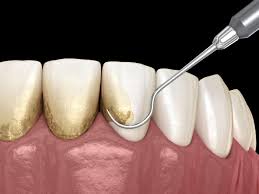If you have tar from a cigarette, cigar, or pipe in your teeth, here’s how to remove it: Fill a pot with water and bring it to a boil. Put the tar in the boiling water and let it simmer for about 10 minutes.
Use a spoon to scoop out the tar and place it in a bowl of ice water. Repeat this process until all of the tar is removed. Rinse your mouth with cold water and spit out the ice.
What is Tar Tar?
Tar tar is a sticky substance that can accumulate on teeth over time. It can be difficult to remove, but there are a few ways to try. One approach is to use a toothbrush and baking soda. Another method is to use a chemical remover.
Tar tar is a natural resin extracted from the trunk and branches of the African oil palm. It has been used as a toothpaste ingredient for centuries, but recent studies have shown that it can be extremely harmful to teeth.
Tar tar can erode teeth enamel and cause gum disease, both of which can lead to tooth loss. What’s more, research shows that tar tar may also increase your risk of developing oral cancer. So if you’re looking for a toothpaste option that won’t damage your teeth, steer clear of tar tar.
If the tar tar is on the surface of the tooth, you may be able to remove it with water and soap. If the tar tar has penetrated into the dentin, it will be more difficult to remove. In that case, you may need to see a dentist for removal.
What are the Symptoms of Temporomandibular Joint Disorder (TMJD)?
TMJD is a condition that causes pain and clicking in your jaw. This can occur at night when you are trying to sleep. You may also have pain in your neck, head and shoulders.
You may feel pain in your jaw when you chew. You may have a clicking sound when you speak. The pain is worse with movement and at night. What are the symptoms of temporomandibular joint disorder (TMJD)?
History of Tar Tar’s as a Toothpaste Ingredient
Tar tar has been used as a toothpaste ingredient for centuries. It was used by ancient Egyptians and Romans, who called it “palma Christi” (meaning “the palm of Christ”).
It was also used by the ancient Greeks and Romans, who called it “sirupos” (meaning “sugar”) because of its sweet taste. In medieval Europe, tar tar was referred to as “terebinth oil,” named after the tree-like resin that produced it. Tar tar toothpaste is not only toxic, it’s also bad for your teeth.
Removal Methods
There are many different ways to remove tar tar from teeth. Some methods are more effective than others, but all of them have their own pros and cons. Depending on the severity of the tar tar residue, different removal methods may be necessary. Here is a breakdown of some of the most common methods:
Steam Cleaning
This is probably the most common method people use to remove tar tar from teeth. It works by heating up water and using it to scrub away at the tar tar residue. The downside is that it can be quite painful, especially if the residue is thick.
Water Flossing
This is another common method people use to remove tar tar from teeth. It involves flossing directly against theTar Tar plaque with water running behind it. The downside is that this method can be difficult if there are a lot of TarTar deposits on teeth.
Dental Cleanings
This is the most common method people use to remove tar tar from teeth. It involves visiting a dentist and having them clean your teeth and remove any TarTar deposits that may have formed. The downside is that this method can be quite painful, especially if there are a lot ofTar Tar deposits on teeth.
Rinsing
This method is often used after brushing over an extended period of time. It involves rinsing your mouth with a mouthwash which removes theTar Tar deposits from your teeth and gums.
Side Effects of TarTar Removal
There are many different ways to remove tar from teeth, but all of them have their own set of potential side effects.
Some of the most common side effects of tar removal methods include: dry mouth, toothache, and gum pain. It’s important to note that these side effects are usually mild and temporary, and they typically go away after the tar is removed from the teeth.
If you experience any serious side effects from using a tar removal method, please consult with a doctor.
Conclusion
TarTar is a sticky, tar-like material that can accumulate on teeth over time. It’s most commonly found on the front teeth and can be difficult to remove.
You can try to rinse mouth with warm water and spit out the water, pat dry lips with a tissue, apply toothpaste in a circular motion to all surfaces of teeth, brush teeth vigorously in an anticlockwise motion (from back to front), rinse mouth after brushing with cool water, repeat steps 3-5 until all TarTar is removed.
